There’s a bunch of reasons why the National Archaeological Museum of Athens is a must-visit when planning your Athens itinerary:
- It’s a a sprawling collection of art and objects dating from prehistory to late antiquity.
- It’s the largest archaeological museum in Greece.
- Visitors can see vases, sculptures, votive offerings, and bronze artifacts from every corner of the country.
And this is just the tip of the iceberg. Read along as we delve into a detailed overview of its exhibits, showcasing the diverse phases of ancient Greek art.
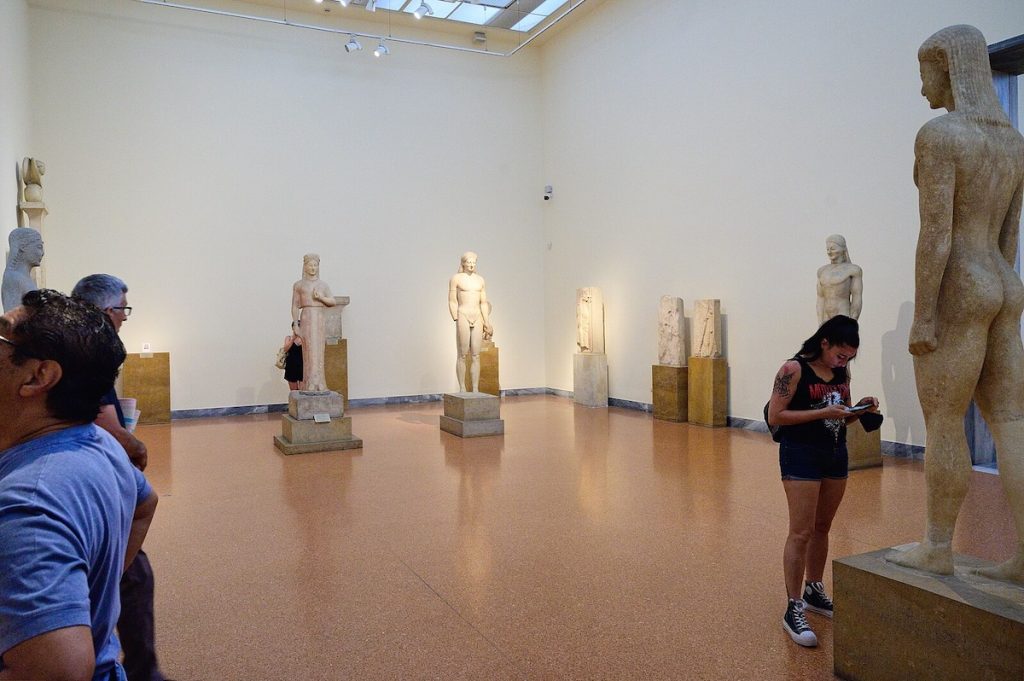
National Archaeological Museum highlights
The archaeological museum is chock-full of one-of-a-kind pieces and marvels of antiquity.
The museum displays pieces in a chronological spiral, allowing you to travel through time from the black-figure painting of the 8th century BCE, to the portrait sculptures of the Roman empire in Greece.
But as you meander through the marvels of Greek history, make sure you check out these artifacts with a particular wow-factor.
Traveler’s tip: Want to see more Greek history in Athens? Check out our guide on where to see Greek ruins in Athens.
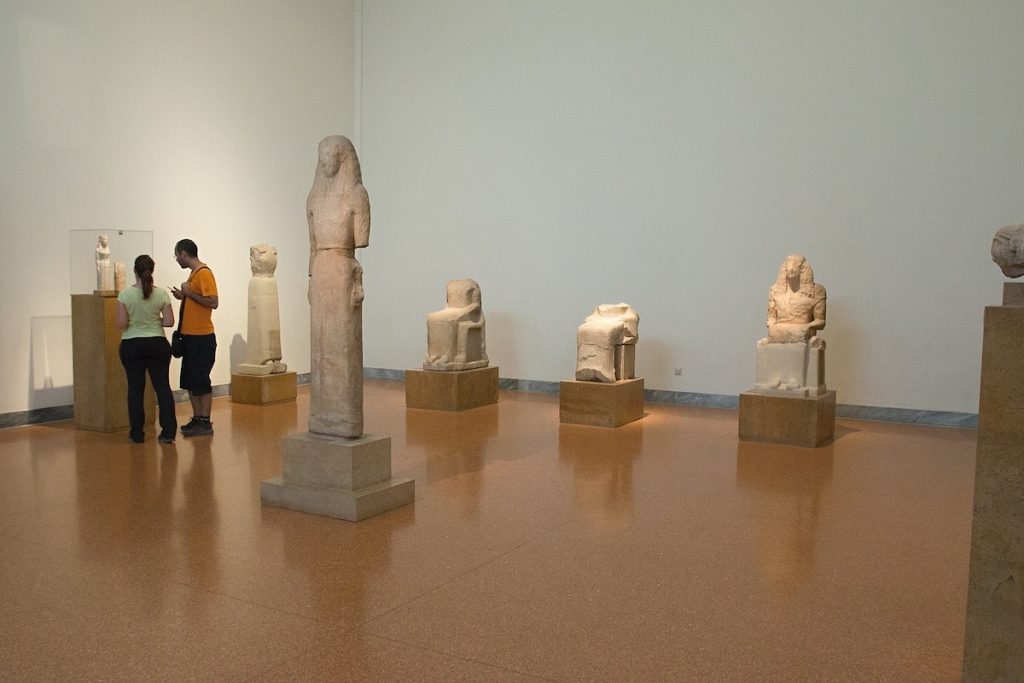
A Monumental Attic grave-amphora from the Dipylon painter
This vase is truly monumental: taller than most museum visitors, it’s painted with tiny detailed motifs of dancers and geometric designs that wrap from the bottom to the top.
The main scene shows a scene of mourners during a funerary procession. This quintessential geometric-period vase was found in the ancient cemetery of Kerameikos, and based on its style was painted by the famous Dipylon painter. It is dated to the late geometric period around 760-750 BCE.
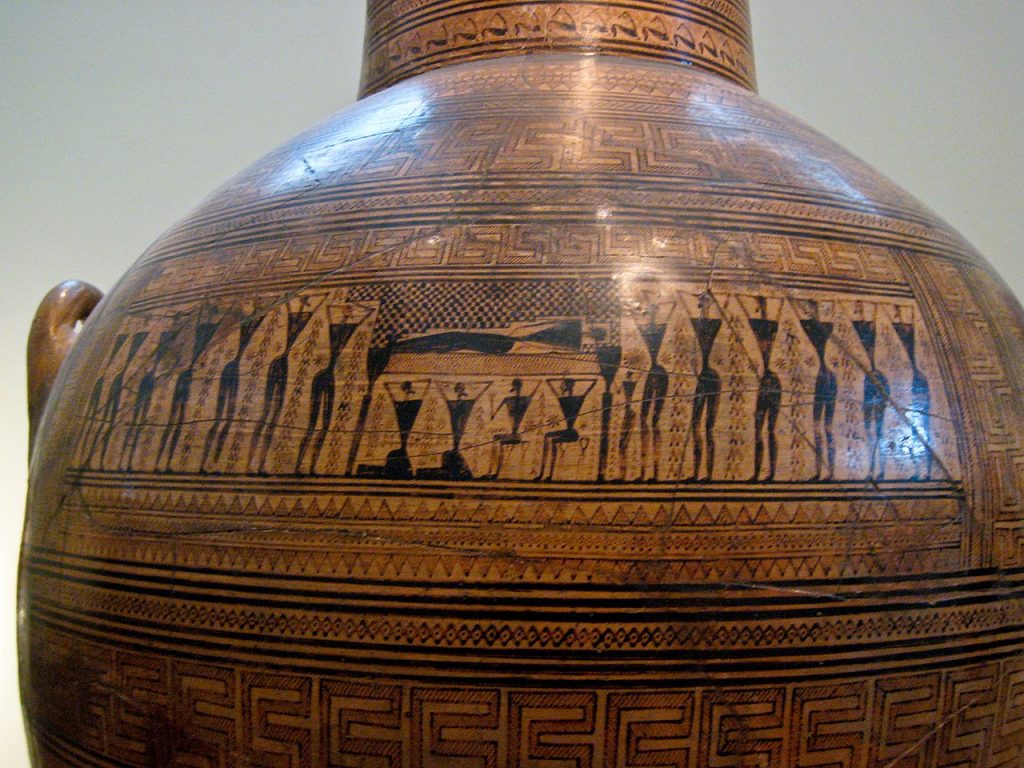
Kouroi through the years
A Kouros (or the plural Kouroi) is an ancient Greek statue form of a naked youthful man. Usually sculpted with one leg forward, you can recognize a Kouros by the way his arms are held at his sides, with his eyes pointing straight ahead.
Over time sculptors perfected the rendering of muscles and anatomical details of Kouroi to make them more and more lifelike. They were often found in sanctuaries as offerings to the gods, or as grave memorials. There are over a dozen Kouroi in the archaeological museum, but some are particular standouts–make sure you check out the Kouros found in Sounion from around 60 BCE. This one is the largest in the museum, standing at about 3 meters tall.
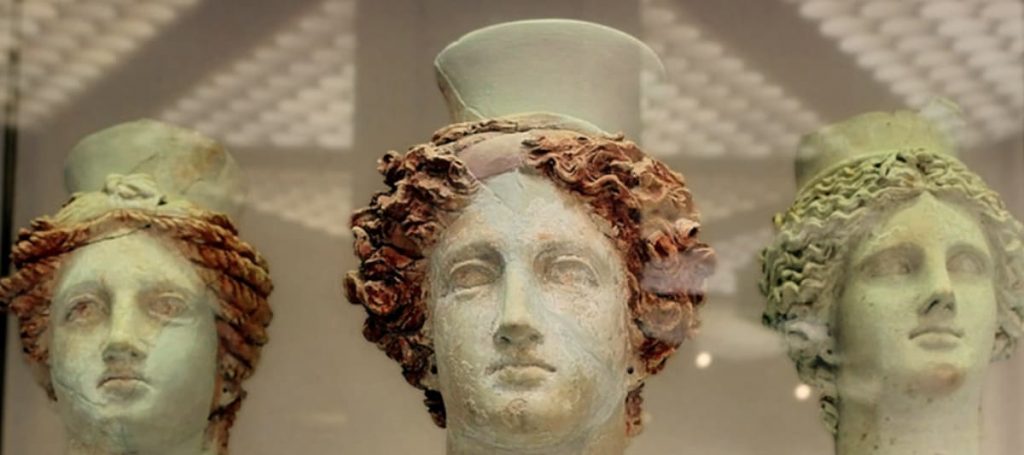
There are also many Korai in the archaeological museum–female statues in a form very similar to the Kouros, and often also created as votive offerings. Korai (singular Kore) are usually smaller than lifesize, and are shown wearing clothes that were fashionable at the time. Often in their left hand they hold a small offering– such as a fruit, a bird, or a flower.
The kore found in Merenda Attica, dated to around 550-540 BCE, is particularly striking– not just for the detail in the folds of her dress, but also for the bit of paint that remains on the statue even to this day, giving a hint of how the ancients actually saw her.
Traveler’s tip: Ready for some more art? Athens has quite a few unique museums that are off-the-beaten-path. Featuring classic and modern works, check out our list of the 5 Best Art Museums in Athens.
Red figure Kylix
This ancient wine cup is one of many pieces of pottery painted in the red-figure style you can see in the museum. But we love this one for the detail and dynamism in the figures– winding around the outside perimeter is a scene of the hero Theseus attacking the bandit Procrustes with an ax, one arm outstretched, followed by Hercules desperately wrestling with the giant Antaios. The display of this Kylix is set up with a mirror so you can also see the inner painting of revelry.
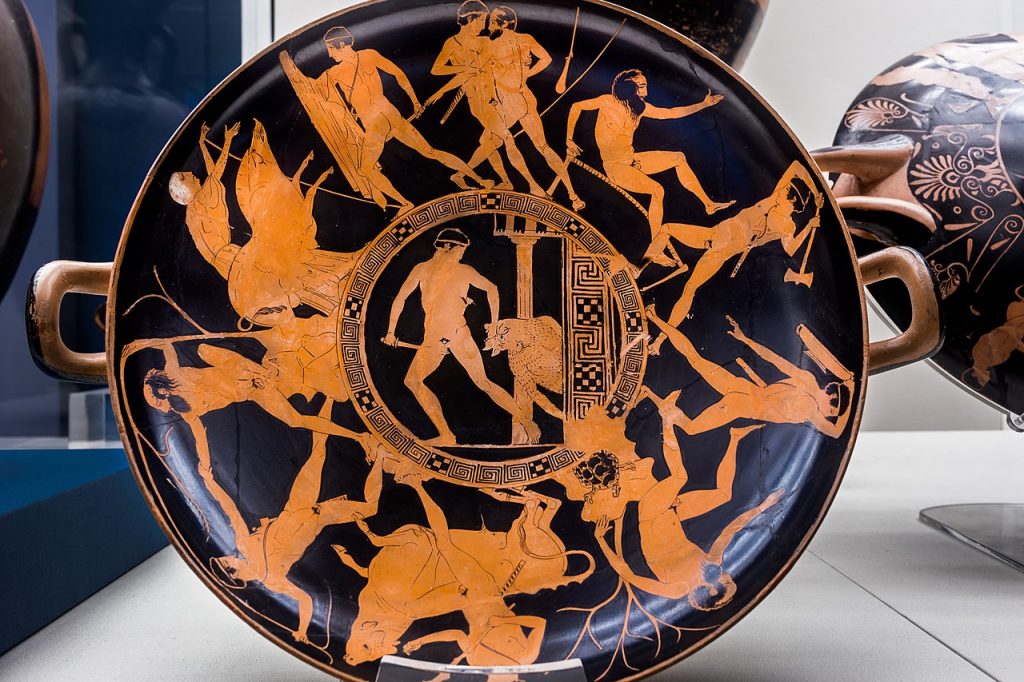
Bronze statue of Zeus… or Poseidon
This incredibly lifelike statue is both a marvel to look at and a decades-long puzzle. The god has been cast with his legs set firmly askance, his muscles tensed, and his eyes gazing straight ahead. One arm stretches forward marking a target, and one is arched behind his head, poised to throw a javelin–but the question remains, what was he originally sculpted throwing?
Is the missing projectile a trident or a lightning bolt? Is the god Zeus or is he Poseidon? Modern Archaeologists believe he is likely Zeus, but we will never know for certain.
This rare bronze statue was found in the sea of Cape Artemision, sunk under water for hundreds of years. Most ancient bronze statues were melted down and repurposed over time, so this is one of the few that remain from the early classical period.
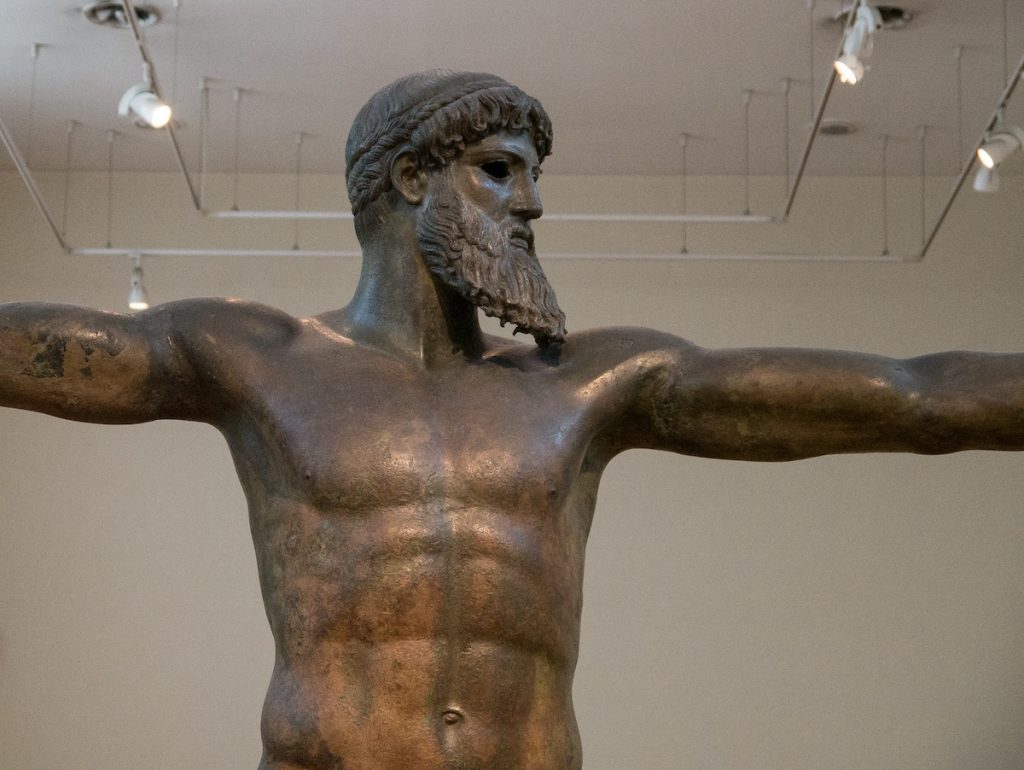
Bronze hand mirrors
The archaeological museum has an extensive collection of ancient bronze artifacts, and we love perusing the collection of bronze hand mirrors. The reflective mirrors themselves are missing, but these intricate frames show a variety of styles and tastes, and how they changed over time. Some of the mirrors have handles in the shapes of women, some have sphinxes or sirens posed around the perimeter, but all are beautiful representations of household art.
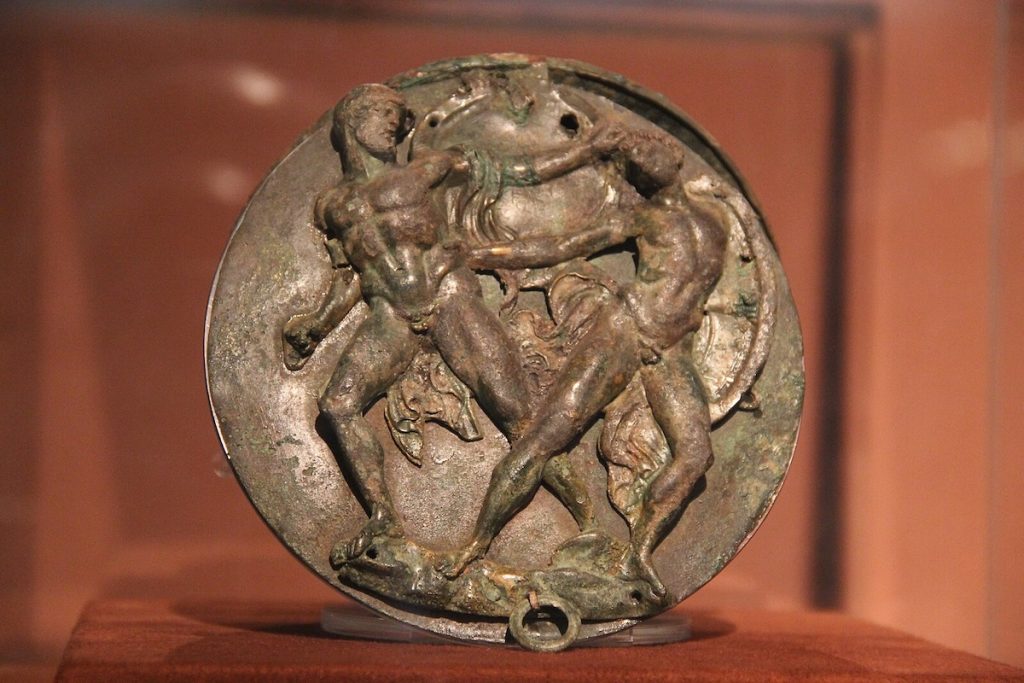
Marble group sculpture of Aphrodite, Pan and Eros
The mythological characters in this marble statue are rendered in such realistic dynamic fashion they look ready to step off of their pedestal and start walking around the museum. This sculpture, dated to around 100 BCE, shows the goddess Aphrodite pushing away the advances of the goat-footed god Pan, holding a sandal threateningly in one hand. The baby-god Eros helps her, pushing away Pan’s goat-horned head. The marble details on this piece are incredible, from the hairs on Pan’s head to the scornful expression on Aphrodite’s face.
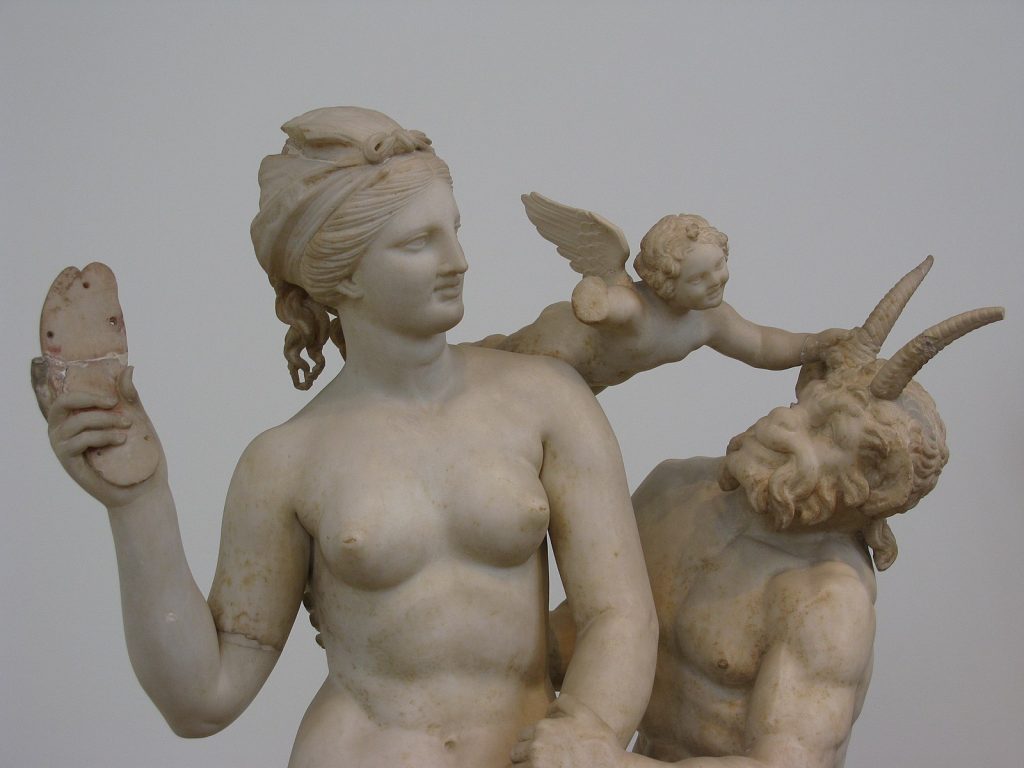
Statue of a sleeping Maenad
This pentelic marble sculpture was found south of the Acropolis in Athens, and it most likely served as a decoration in an ancient wealthy villa. This sculpture dates from around 117-130 CE, during the time of the emperor Hadrian. This sculpture is worth walking a full 360-degree turn around to catch all of the minute details of the musculature and hairstyle. The Maenad (a female follower of Dionysus) sleeps stretched out on a panther skin, presumably exhausted from revelry with the god Dionysus.
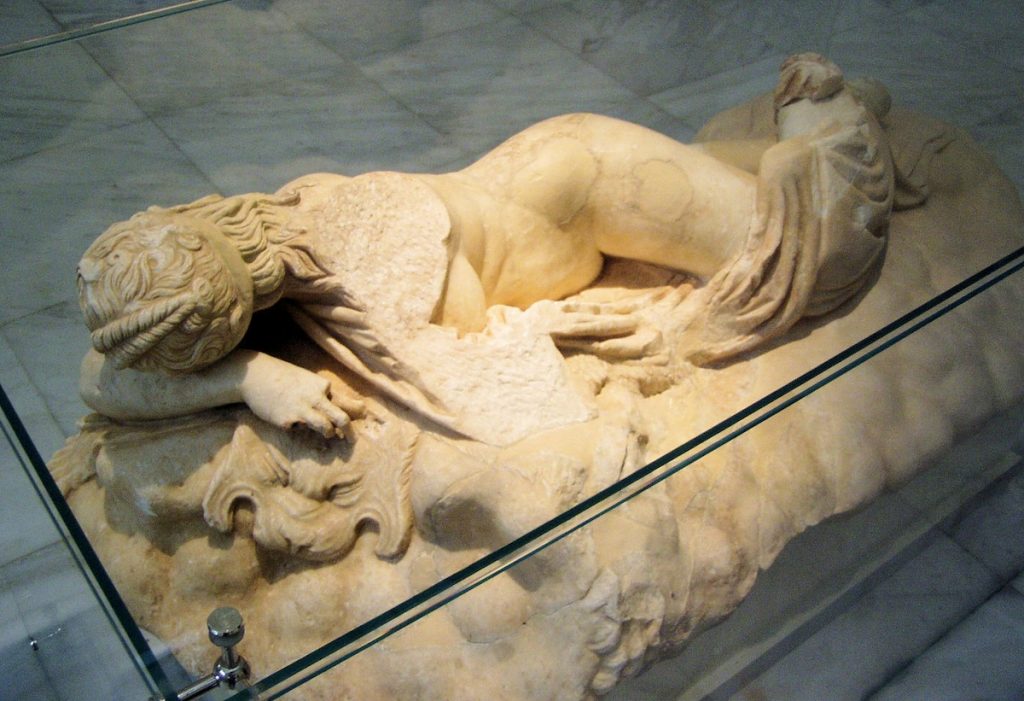
National Archaeological Museum of Athens: FAQs
Location and opening Hours
The National Archaeological museum is located in central Athens on Patission Street. You can easily reach there by Metro from either the Omonia or Victoria station.
The museum has different summer and winter hours. Be sure to consult the up-to-date hours during the time you want to go on the official website.
Is the museum accessible for those with disabilities?
The Greek National Archaeological Museum has a separate accessible entrance on the side of Vas. Herakleiou Street. You can access this entrance from a ramp from the front of the Museum or directly from the pavement of the side street Vas. Herakleiou. Inside the museum, the main exhibit is all on the ground floor with no stairs. There are elevators to the second floor. There are also audio guides available for the museum upon request.
How much does entrance cost?
Ticket cost range between 6 and 12 Euros, but be sure to consult the up-to-date prices on the official website.
How long does a visit take?
A walk through the sprawling collection of the archaeological museum will take at least one hour, but easily stretches longer if you are interested in reading about the artifacts and visiting every exhibit!
Is there somewhere to eat inside the museum?
The museum has a small cafe in the basement. This cafe is quite hidden and feels a bit like a sanctuary from the hustle and bustle of the rest of the museum.

